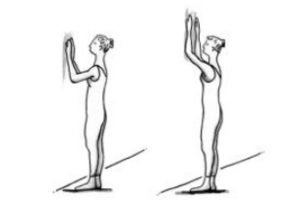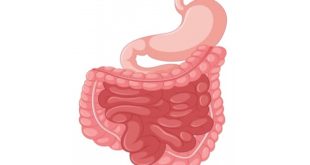When breast cancer treatment is completed, many people feel relieved. You must follow post-surgery recommendations even after your breast cancer therapy is completed. The need for post-operative care is essential for a quick recovery.
Dr. Sandeep Nayak, one of the greatest oncologists in Bangalore, India, helps his patients recover from breast cancer surgery fast and safely. As a skilled surgical oncologist in Bangalore, India, he uses evidence-based practices to improve his patients’ recovery while minimizing pain and problems.
He was the first to offer laparoscopic and robotic cancer surgery in India. Cancer may now be discovered and treated more quickly because of healthcare infrastructure and technology developments, particularly when adopting cutting-edge cancer treatment procedures like laparoscopy and robotic surgery.
Dr. Nayak is one of India’s few surgeons who has received advanced training in laparoscopy and robotic cancer surgery. He is considered one of India’s top oncologists. After all, he is a cancer specialist in early detection since “prevention is better than cure,” according to him.
For a complete and quick recovery, the specialist understands the importance of post-operative care. As a result, he constantly recommends his patients closely follow the aftercare guidelines.
The topic of post-operative breast cancer surgical care is discussed in this article. To learn more, keep reading this article.
1) What should I do about my wound?
Maintain the wound’s cleanliness. There are no creams or powders required. If the injury is healthy, there is no need to repair it. For all of our wounds, we favor open dressings.
2) When will I have the opportunity to take a bath?
In most circumstances, after two weeks, you can take a full-body bath on the second or third day after surgery. In the meantime, sponge your entire body and pat yourself dry. Water is not allowed to enter the wound. There’s no need to be concerned.
3) What is the most effective treatment for my wound?
The nurse may remove the dressing on the first post-operative day and leave the wound exposed. The incision is usually stapled shut and requires no particular attention other than drying after a bath.

4) How should I deal with the clog in the drain? Is it required to wash it after each emptying?
The drain can be stored in the post-operative packaging bag. Every day, you must empty it and measure it with the measuring cylinder with the kit. It is not necessary to clean the drain box regularly. You can learn how to deal with it from the specialist nurse assigned to you.
5) Is it acceptable for me to wash my hair?
Yes, with a bit of assistance. Hair washing does not affect the healing process.
6) How should I deal with the pain in my arm and the strained sensation at the surgical site?
Tingling and numbness in the inner area of the upper arm are common after axillary surgery, particularly axillary dissection. After a sentinel lymph node biopsy, this is far less common. Even a light touch can be irritating.
A nerve that runs from your armpit and into your arm is tugged or damaged during surgery, which causes this. These strange sensations fade with activity and time.
7) Will I be able to sleep on the surgery site?
Yes, as long as you don’t lay your head against the arm or lean against the drain tubes.
8) Is it possible to do some of my work from home?
Yes, you can complete a variety of household tasks without becoming exhausted. Dustng, arranging the table, and keeping an eye on the kitchen are just a few examples. According to Dr.Nayak, India’s best oncologist, you can gradually resume your regular routine in 2-3 weeks.
9) When will I be able to get my driver’s license?
You can drive and go around when the drain has been removed.
10) What am I going to eat for dinner?
It would help if you focused on eating good, nutritional cuisine with your family at the dinner table. If you have diabetes or are overweight, a dietician can help you develop a nutrition plan.
11) How frequently should I exercise?
After surgery, you should begin exercising as soon as possible and do so more frequently at first, such as every hour for 3-5 minutes. Reduce the frequency to 4-5 times per day until you’ve reached a full range of motion.

12) When will I be told what treatment options I have?
After 7-10 days following surgery, your subsequent treatment will be selected based on your histology result.
13) What are the potential challenges I’ll have to deal with? How am I going to deal with them?
There may be soreness, edema, fever, drain leaking, or a malfunctioning drain at the surgery site. All of these issues must be dealt with.
14) When will my chemo treatment begin? Is it a distressing experience? Is it required that I be admitted?
Chemotherapy usually starts three weeks after surgery. The wound should be healed before starting chemotherapy. Within 3-6 weeks post-surgery, chemotherapy should be started.
15) What are the most prevalent side effects of chemotherapy?
Chemotherapy is designed to target quickly dividing cells. The cells that line the gut, hair follicles, and bone marrow divide quickly, whereas cancer cells divide quickly. This is also why chemotherapy causes nausea, hair loss, and an increased risk of infection. Everything adds up to weariness.
The good news is that medications are available that can help with a variety of chemotherapy side effects. These side effects last about a week after chemotherapy, after which the recovery process begins.
16) How does radiation therapy work, and when will it be used? How frequently do I have to come back for radiation, and how long does it take?
Radiation therapy is a treatment that involves providing high-energy X-rays to the breast after BCS or to the chest wall after breast removal (mastectomy).
Radiation is generally given after chemotherapy. Usually, the traditional treatment lasts 5-7 weeks, although emerging techniques can offer it in as short as three weeks.
The Best oncologist in India claims that radiation can be completed in a single sitting using intrabeam IORT equipment in some circumstances.
18) How do I know I’m disease-free? What is my strategy for following up? And with whom should I arrange a follow-up meeting?
You’ll be screened for symptoms and seen clinically every three months for the first two years, then six times a year for the next three years, and finally once a year for the next five years. Once a year, a mammogram will be performed, and every six months, an ultrasound and chest X-ray will be served. You will be contacted for a follow-up visit after you have completed your treatment.
Following the recommended post-operative care can help you recuperate and get other treatments following breast cancer surgery.
 Hello India News
Hello India News




